Natural spices
The earliest application of spices in history started from natural spices. The so-called natural flavors, refers to the direct purified substance isolated from natural aromatic plant or animal raw materials via different physical approaches. They are generally considered as being safe. Typical natural species include essential oils, tinctures, extract; spices oil resin and absolutes oil.
Natural spices are important parts of the spices industry. Currently it has discovered of more than 3,000 species of aromatic plants in the world with however, only over 200 species being subject to industrialized production; wherein the natural essentials oil such as citronella oil, cedar oil, litsea cubeba oil, lemongrass oil, lemon eucalyptus oil, sassafras oil, are used as semi-synthetic raw material in large usage amount. Other kinds of essential oils that used in large amount also include citrus oils such as orange oil, lemon oil, lime oil, bergamot oil, red orange oil, grapefruit oil; mint genus essential oils such as peppermint, spearmint oil.
Although the international production of the natural spices had achieved doubled growth in the mid-1980s to the mid-1990s, but the growth rate is significantly lower than the synthetic spices, mainly due to that the cultivation and processing of natural spices is affected by climate, environment, transport and many other factors, causing the fluctuations in the production quantity, quality and price of the natural spices. Moreover, with the development of the analysis and synthetic technology, many of the key components contained in the natural spices can be more and more artificially synthesized, resulting in the decrease of the ratio of the natural spices, but the increase of the ratio of the synthetic spices used in the spices formulation of the daily chemicals. But in terms of food spices, people still advocate natural version, realizing that it can give people a feeling of security, so that the value of the natural food spices has been multiplied.
Even in daily chemical fragrance, the natural spices still have its own irreplaceable role. Natural spices has harmonious aroma. They have unique structurally aromatic components with some of them having not yet been recognized. They can make the formulated spices be more abundant, harmonious and rounded as well as endowing the spices of a natural feeling. Without the natural spice, today's blending technology has great difficulty to reach this realm. In recent years, the idea of "return to nature" has been spread all around the world, further energizing the natural spices. Development of natural spices is in line with the human realm of coexisting with nature and it is the age that gives a fantastic opportunity for the development of natural spices.
With the continuous development of technology, the range of natural spices has also gradually expanded. In addition of extracting of aromatic plants via distillation, extraction, grinding and other processes, it also comprises the chemical mixtures produced from the non-enzymatic reactions between amino acids and carbohydrates under certain conditions, which is called Maillard reaction. It also includes various types of enzyme chemically synthesized biological species.
The sugars used in Maillard reaction include glucose, sucrose, xylitol, rhamnose and polyhydric alcohols such as propylene glycol, glycerol, and sorbitol. There are a lot of types of amino acids. People have also used animal (plants) hydrolyzed protein, animal grease or bone powder as well as yeast with the reaction producing a mixture of different fragrances of chicken flavor, meat flavor, bread flavor as and chocolate flavor. The mixture is recognized internationally as being "natural" and therefore has been widely applied in the preparation of various food spices and tobacco spices. Another kind of biological spice is the organic acid and alcohols produced through natural biological fermentation as well as the ester produced through dehydration under the action of esterase. This is also known as "natural"; people has also used dairy products as the raw material, going through yeast, Lactobacillus or carrying out enzyme reaction to generate butanedione and allylic lactones, these biotechnology produced spices are also considered as being "natural". These kinds of high-technology products are also under active research and development in the international community
- Structure:

- Chemical Name:Spearmint oil
- CAS:8008-79-5
- MF:C6H14O6
- Chemical Name:BERGAMOT OIL
- CAS:8007-75-8
- MF:
- Chemical Name:Peppermint oil
- CAS:8006-90-4
- MF:
- Structure:
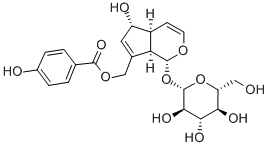
- Chemical Name:Agnuside
- CAS:11027-63-7
- MF:C22H26O11
- Chemical Name:Origanum oil
- CAS:8007-11-2
- MF:
- Chemical Name:Citronella oil
- CAS:8000-29-1
- MF:
- Chemical Name:Lavander oil
- CAS:8000-28-0
- MF:
- Chemical Name:Anise oil
- CAS:8007-70-3
- MF:W99
- Chemical Name:Litsea cubeba oil
- CAS:68855-99-2
- MF:
- Chemical Name:Fennel Oil
- CAS:8006-84-6
- MF:
- Chemical Name:Rose Oil
- CAS:8007-01-0
- MF:
- Chemical Name:Vetivert oil
- CAS:8016-96-4
- MF:
- Chemical Name:Mandarin oil
- CAS:8008-31-9
- MF:
- Structure:

- Chemical Name:Geranium oil
- CAS:8000-46-2
- MF:C15H24O2
- Structure:
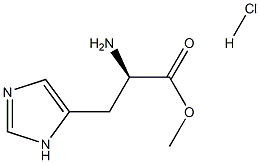
- Chemical Name:Clove oil
- CAS:8000-34-8
- MF:C7H12ClN3O2
- Chemical Name:Rosemary oil
- CAS:8000-25-7
- MF:
- Chemical Name:Ginger oil
- CAS:8007-08-7
- MF:
- Chemical Name:White camphor oil
- CAS:8008-51-3
- MF:
- Chemical Name:Sandalwood oil
- CAS:8006-87-9
- MF:C30H48O2
- Chemical Name:Sassafras oil
- CAS:8006-80-2
- MF:
- Chemical Name:Parsley Seed Oil
- CAS:8000-68-8
- MF:
- Chemical Name:Basil oil
- CAS:8015-73-4
- MF:
- Chemical Name:Celery Seed Oil
- CAS:8015-90-5
- MF:
- Chemical Name:Capsicum oleoresin
- CAS:8023-77-6
- MF:W-99
- Chemical Name:Peach flavor
- CAS:
- MF:
- Chemical Name:Costus oil
- CAS:8023-88-9
- MF:
- Structure:
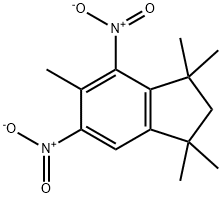
- Chemical Name:1,1,3,3,5-PENTAMETHYL-4,6-DINITROINDANE
- CAS:116-66-5
- MF:C14H18N2O4
- Chemical Name:Patchouli oil
- CAS:84238-39-1
- MF:
- Structure:

- Chemical Name:BENZOIN
- CAS:9000-05-9
- MF:C14H12O2
- Chemical Name:Vanilla tincture
- CAS:8047-24-3
- MF:
- Chemical Name:Cornmint oil
- CAS:68917-18-0
- MF:
- Chemical Name:Cardamom Oil
- CAS:8000-66-6
- MF:
- Chemical Name:Dill Oil
- CAS:8006-75-5
- MF:
- Structure:

- Chemical Name:JasMine Oil
- CAS:8022-96-6
- MF:C10H16
- Chemical Name:BOIS DE ROSE OIL
- CAS:8015-77-8
- MF:
- Chemical Name:Pineneedle Oil
- CAS:8021-29-2
- MF:
- Chemical Name:Ylang Ylang Oil
- CAS:8006-81-3
- MF:
- Chemical Name:MYRISTICA OIL
- CAS:8008-45-5
- MF:
- Chemical Name:Citrus Oil
- CAS:8008-56-8
- MF:
- Chemical Name:Thyme Oil
- CAS:8007-46-3
- MF:Null
- Chemical Name:LAUREL LEAF OIL
- CAS:8006-78-8
- MF:
- Chemical Name:Petitgrain Oil
- CAS:8014-17-3
- MF:
- Chemical Name:CORIANDER OIL
- CAS:8008-52-4
- MF:
- Chemical Name:Chamomile Oil
- CAS:8015-92-7
- MF:
- Chemical Name:AMBRAIN
- CAS:8016-26-0
- MF:
- Chemical Name:MARJORAM OIL,SPANISH
- CAS:8016-33-9
- MF:
- Chemical Name:Palmarosa Oil
- CAS:8014-19-5
- MF:
- Chemical Name:Cumin Oil
- CAS:8014-13-9
- MF:
- Structure:
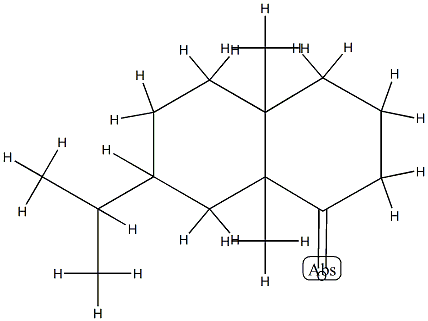
- Chemical Name:Valerian root oil
- CAS:8008-88-6
- MF:C15H26O
- Chemical Name:Clary sage oil
- CAS:8016-63-5
- MF:
- Structure:

- Chemical Name:ORANGE OIL
- CAS:8028-48-6
- MF:C15H22O
- Structure:

- Chemical Name:3-OCTEN-2-ONE
- CAS:1669-44-9
- MF:C8H14O
- Chemical Name:LEMONGRASS OIL, WEST INDIAN TYPE
- CAS:8007-02-1
- MF:W99
- Chemical Name:Gentonorone acetate
- CAS:
- MF:
- Structure:

- Chemical Name:FEMA 2817
- CAS:8002-72-0
- MF:C8H12S2
- Chemical Name:Pine needle oil
- CAS:8000-26-8
- MF:
- Chemical Name:Pimenta Oil
- CAS:8006-77-7
- MF:
- Chemical Name:Birch Oil
- CAS:8001-88-5
- MF:
- Chemical Name:Carrot Seed Oil
- CAS:8015-88-1
- MF:
- Chemical Name:COGNAC OIL
- CAS:8016-21-5
- MF:
- Chemical Name:Ho oil
- CAS:8022-91-1
- MF:
- Chemical Name:SAGE OIL, SPANISH
- CAS:8022-56-8
- MF:Null
- Chemical Name:Marjoram Oil
- CAS:8015-01-8
- MF:
- Chemical Name:EUGENIA CARYOPHYLLUS (CLOVE) LEAF OIL
- CAS:8015-97-2
- MF:
- Structure:

- Chemical Name:Bitter almond oil
- CAS:8013-76-1
- MF:C7H6O
- Chemical Name:LIME OIL
- CAS:8008-26-2
- MF:
- Chemical Name:CEDAR LEAF OIL
- CAS:8007-20-3
- MF:
- Chemical Name:ANISE OIL
- CAS:68952-43-2
- MF:
- Chemical Name:Orange sweet oil
- CAS:8008-57-9
- MF:C15H24O
- Chemical Name:PENNYROYAL OIL
- CAS:8013-99-8
- MF:
- Chemical Name:Black Pepper Oil
- CAS:8006-82-4
- MF:
- Chemical Name:Guaiacwood oil
- CAS:8016-23-7
- MF:
- Chemical Name:FEMA 2618
- CAS:8022-15-9
- MF:
- Chemical Name:Osmanthus Absolute
- CAS:68917-05-5
- MF:
- Chemical Name:Curcuma oil
- CAS:8024-37-1
- MF:W99
- Chemical Name:Orris oil
- CAS:8002-73-1
- MF:
- Chemical Name:FIR NEEDLE OIL, CANADIAN
- CAS:8021-28-1
- MF:
- Structure:

- Chemical Name:Perilla oil
- CAS:68132-21-8
- MF:C24H38O4
- Chemical Name:CANANGA OIL
- CAS:68606-83-7
- MF:
- Chemical Name:LOVAGE OIL
- CAS:8016-31-7
- MF:
- Chemical Name:Matricaria Oil
- CAS:8002-66-2
- MF:
- Chemical Name:Grapefruit Oil
- CAS:8016-20-4
- MF:
- Chemical Name:Olibanum oil
- CAS:8016-36-2
- MF:C63H98O6
- Chemical Name:BUCHU EXTRACT
- CAS:68650-46-4
- MF:
- Chemical Name:COPAIBA OIL
- CAS:8013-97-6
- MF:
- Chemical Name:Spikenard extract
- CAS:8022-22-8
- MF:
- Structure:

- Chemical Name:Mustardseed Oil
- CAS:8007-40-7
- MF:C4H5NS
- Chemical Name:PINE OIL
- CAS:8023-99-2
- MF:
- Chemical Name:Ambrette seed oil
- CAS:8015-62-1
- MF:
- Chemical Name:AMYRIS OIL
- CAS:8015-65-4
- MF:
- Chemical Name:STYRAX ESSENCE OLIFFAC
- CAS:8046-19-3
- MF:
- Chemical Name:LEMON OIL
- CAS:84929-31-7
- MF:
- Chemical Name:RUE OIL
- CAS:8014-29-7
- MF:
- Structure:
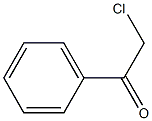
- Chemical Name:Mace oil
- CAS:8007-12-3
- MF:C8H7ClO
- Chemical Name:FEMA 2795
- CAS:9000-50-4
- MF:
- Chemical Name:FEMA 3040
- CAS:8016-84-0
- MF:
- Chemical Name:BITTER ORANGE
- CAS:72968-50-4
- MF:
- Chemical Name:VANILLA EXTRACT
- CAS:8024-06-4
- MF:
- Chemical Name:MYRRH GUM
- CAS:9000-45-7
- MF:
- Chemical Name:PETITGRAIN OIL PARAGUAY
- CAS:68915-85-5
- MF: